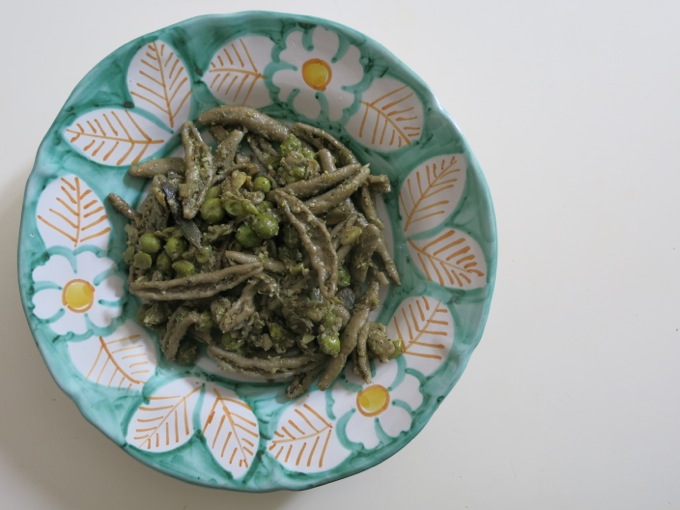
It’s artichoke season. And by artichoke season I’m not just referring to that time of year when I buy, cook and eat as many artichokes as possible. It’s also when it becomes difficult for me to take photographs of anything but artichokes. I pass by that monument to carciofi love, the leaning tower of Giggetto, almost every day. Then there’s the market, where at least four different varieties of purple and green globes vie for my attention.
As photogenic as these beauties are while posing in all their pristine glory, they pretty much turn into an army-green, dull, mush when cooked. I’m not talking about the crispy fried Carciofi alla Giudea, which have their own golden charm, but about almost any other dish where artichokes figure as a main ingredient. Pasta, risotto, stews….it’s not easy to capture a photograph nearing anything as gorgeous as they actually taste.
I made things even more difficult last week when I decided to make pasta. Rather than use golden, handmade fettucine, or pale slow dried rigatoni from Gragnano, I opted for a kind of pasta that has the same Pantone color code as cooked carciofi: grey, dull and dark.
Last time Domenico went to Bari he came home with a bag of hand made strascinati. Stascinati are a cousin of orecchiette. They are usually made with semola di grano duro, a type of coarsely ground durum wheat flour and water (no eggs). The small bits of dough are artfully dragged across a rough wooden board to form their shape. While orecchiette involves the expert use of a thumb to form an ear-shaped little bite, strascinati need three fingers to pull the strip of dough into a 2 inch, oblong form.
But these particular strascinati were even more special. They had been made with the addition of farina di gran’arso, a type of burnt flour that not only gives the pasta a hauntingly toasted taste, but also, as an added bonus, a not-so-attractive grey color.
Ok, maybe I’m exaggerating just a little. But let me digress a bit and tell you how I come up with my blog posts. I don’t have any big week-long or month-long plan regarding what I’m going to be writing about. Instead, I usually go to the farmer’s market on Saturday and then, as I’m putting away my produce, I take the time to photograph the ingredients before I put them in the fridge. I do this because a) the vegetables are looking their best and b) the light is great at that time of day.
Then I go about my week, cooking up what I’ve bought. I don’t decide to cook something specifically for the blog, instead, what I cook just turns up here. But this is where the photography part gets tricky. We eat dinner at 8pm, when there is very little natural light. So I try to keep something aside to photograph the next day, when the light is better.
This game plan usually works out just fine. Except, of course, when what I’m about to photograph is a big bowl of grey pasta dressed with army-green mixture of artichokes and peas. And no amount of mid-day sun or bright tasting ingredients – like lemon zest from Ravello and freshly picked mint from the terrace – can change that.
A brilliantly glazed ceramic plate from Vietri does, however, do wonders. In fact, I bet you didn’t even realize how unattractive the colors of the food were, right?
Despite the dullness of the colors though, this dish really does scream spring and brings out the best of the beautiful artichokes. The ‘sauce’ was mostly trimmed artichokes, with a good amount of freshly podded peas. To bring it all together I used a mint pesto, made with almonds and heaping quantities of zest from the untreated lemons Domenico got from Ravello.
I could have used a prettier pasta, I guess. And I meant to add a few barely cooked, bright green peas at the end. But I didn’t. So while this dish doesn’t win any awards for beauty, I think it does win the best taste award for miss springtime pasta of March 2014. 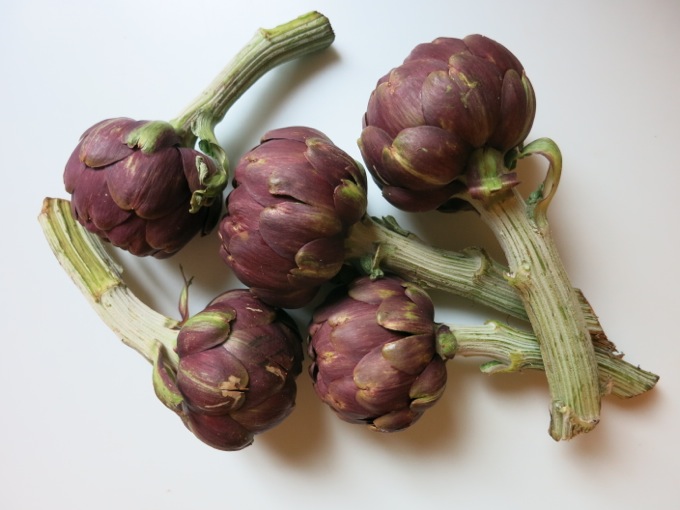
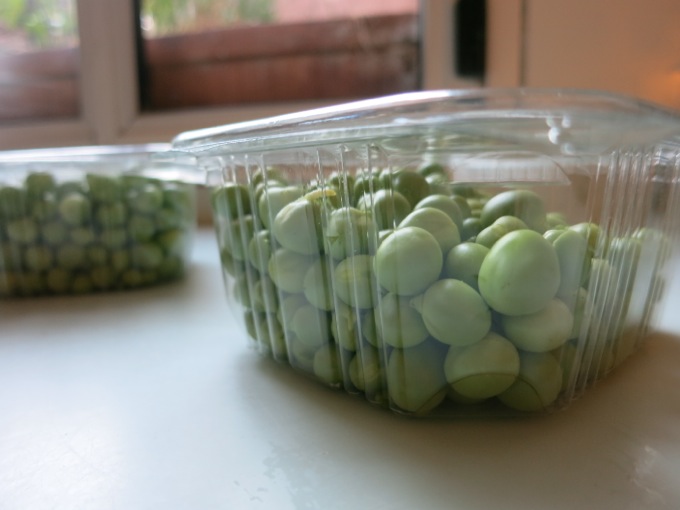
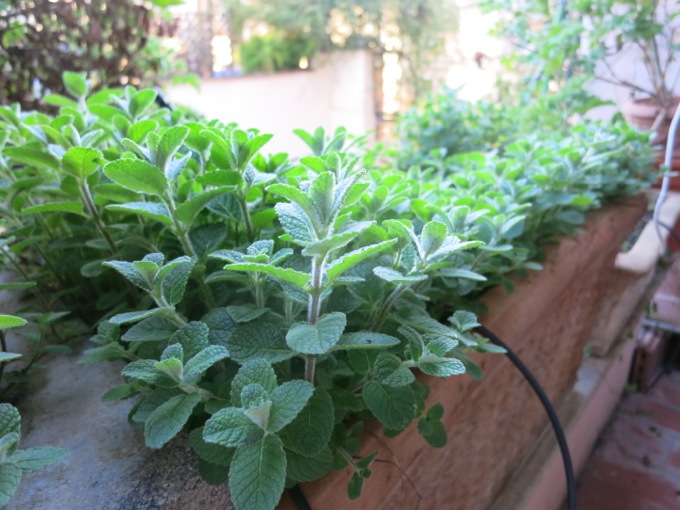
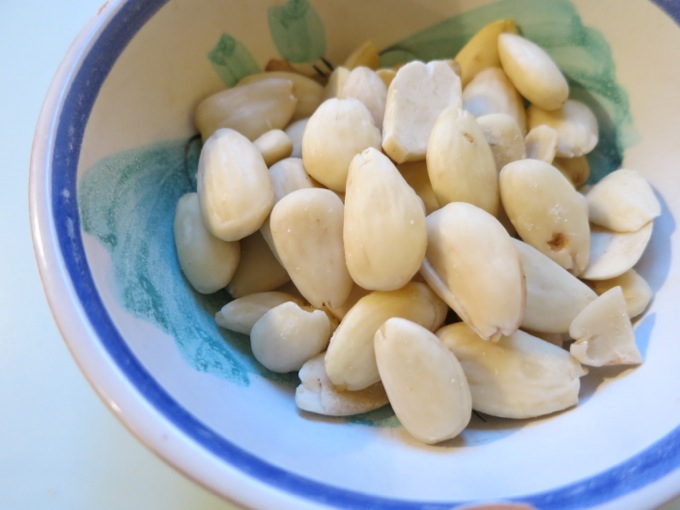
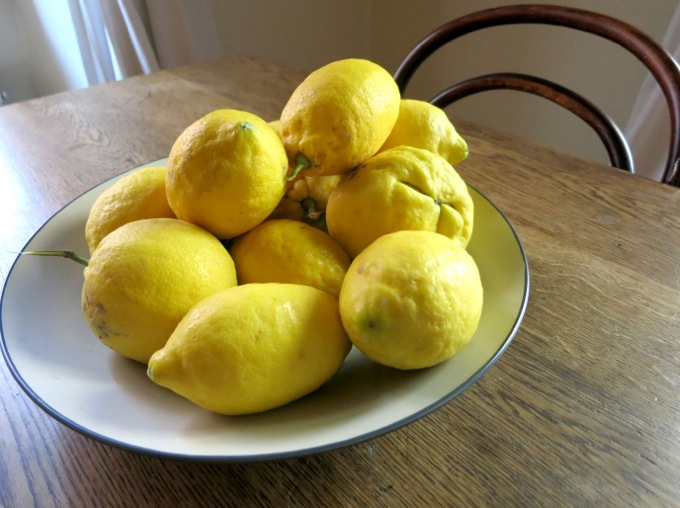
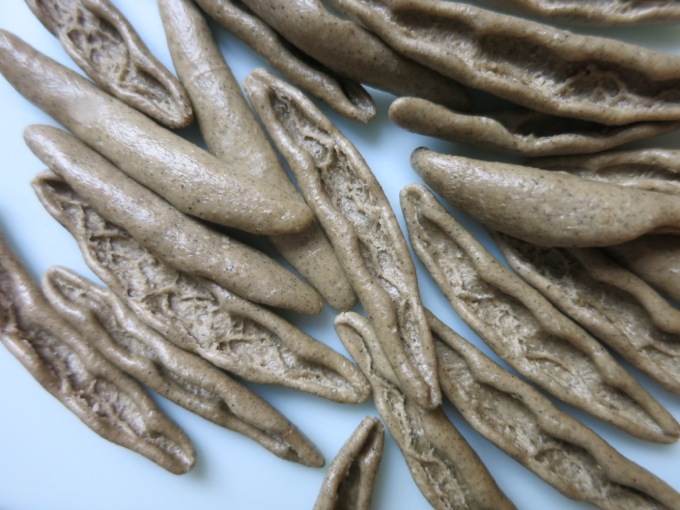
artichokes + peas + mint pesto {pasta}
Prep
Cook
Total
Yield 6
Ingredients
- 6 large artichokes
- 3 tablespoons extra virgin olive oil
- 1 small onion, chopped
- 1 tsp salt
- 2 cups fresh peas
- 500 gr / 1 pound strascinati pasta
- 1 big bunch of mint (about 1 1/2 cups)
- 1/4 cup almonds
- 2 cloves garlic
- zest from one large untreated lemon
- 1/4 tsp salt
- 1/3 cup olive oil
- 1/4 to 1/3 cup grated mild pecorino or parmesan cheese
Instructions
- Trim the artichokes by removing the outer tough leaves and the sharp tips. Cut away any bright green bits until you get to the soft heart. Slice thinly and put in a bowl of acidulated water.
- Pour olive oil into a pan, and add the onion and salt. Let the onions soften, for about 8 minutes, without getting brown
- Add the drained artichoke slices to the pan, stir and add about a half cup of water. Let them simmer until they soften. Don’t let them brown, and add a bit more water if you need to.
- When the artichokes are almost done, add the peas, and let cook until peas are done. Taste and adjust for salt (but remember the pesto will also add flavor.)
- Place the mint, garlic, almonds, zest and salt in a small food processor. Puree until smooth. You may have to add a bit of the olive oil to make it blend. Eventually add all of the oil until it is well chopped and mixed.
- Place the puree into a small bowl and add the grated cheese.
- Bring a large pot of salted water to boil and add the pasta. Cook until al dente.
- Drain, reserving a cup of the pasta cooking water.
- Place the pasta into a large bowl, and toss with the artichoke mixture (which you should reheat if it has gotten cold).
- If the pesto seems very thick, add a ladle full of the pasta cooking water to thin it out a bit, and then add to the pasta, tossing to mix it well. At this point you can also add a bit more pasta cooking water to loosen things up and make it a bit more creamy.
- Serve topped with freshly ground black pepper.
Courses pasta
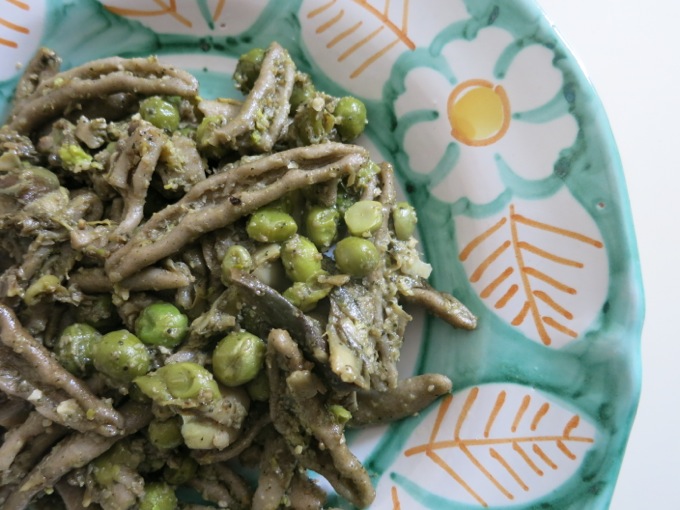
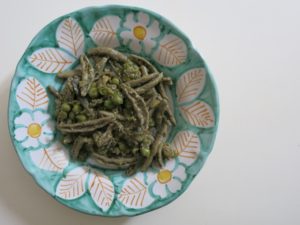
Sounds wonderful! Quick question–you only use the heart, not the tender inner leaves? I assume you discard the choke too? Looking forward to trying, even without Italian artichokes!
You’ve done it again – captured the very essence of good, seasonal food. This sounds so very tasty. Just reading it is a pleasure, and your photos are lovely. How cool that you have pasta made with grano arso, an ingredient we do not see here in Los Angeles. Not ever.
Gorgeous dish! The artichokes we can find around here are so sad in comparison…
Oooh, this sounds so really good but am I too lazy to make this? Possibly. Because I can’t get my mind off the photo of the already shelled fresh peas…so. Much. Time. But worth it!
Bon Weekend and I loved hearing more about your process too. 🙂
I will be in Rome the end of April and would love some suggestions as to the best restaurants to eat Artichokes.
Giggetto, Piperno and Sora Margherita are three of my favorites.